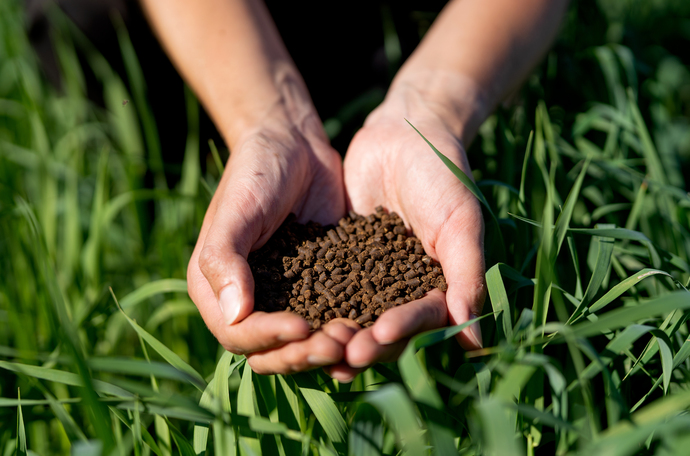What are organic-based fertilizers?
All organic-based fertilizers, both organic fertilizers and organo-mineral fertilizers, contain carbon to a greater or lesser degree. Increasing soil carbon helps maintain or increase soil organic matter content, thus supporting soil health and promoting crop resilience.
Organic fertilizers contain organic carbon and nutrients of solely biological origin. They utilize nutrients derived mainly from materials of plant or animal origin. Animal by-products (such as manure or by-products from the meat and fish processing industries), agricultural residual products (green waste, composted green waste) or recycled bio-waste (compost or digestate from food waste, slurry) are the raw materials that are most used. They can be unprocessed (manure, compost, digestate) or processed into high-quality fertilizer, either in solid (pellets, granules) or liquid form.
An organo-mineral fertilizer is a co-formulation of one or more inorganic fertilizers and one or more materials containing organic carbon and nutrients of solely biological origin. They combine the positive properties of both mineral and organic fertilizers and can be tailor made to meet certain crop requirements.
What are the benefits of organic-based fertilizers?
Resource-use efficiency is necessary to contribute to a zero-waste society.
In farming, that means using both the nutrients already available on the farm as fertilizers, such as manure, crop residues and digestates, and also safely bringing recycled nutrients from other sources, such as food waste either composted or digested, back into the loop as fertilizing products. Using recovered nutrients in the production of organic-based fertilizers (organic and organo-mineral fertilizers) is beneficial for the environment because they are reused instead of being disposed of as waste.
Furthermore, organic-based fertilizers can bring additional benefits, such as improvements in soil health and increased plant resilience to biotic and abiotic stress, which is important in a changing climate.


